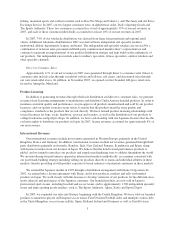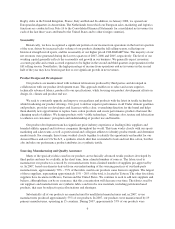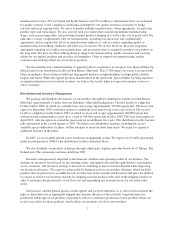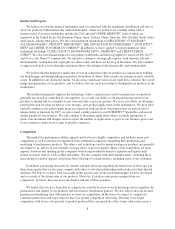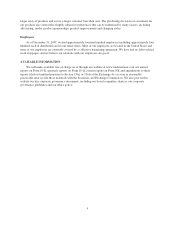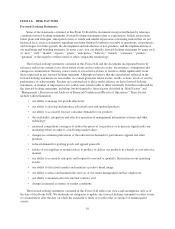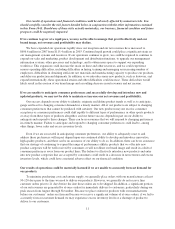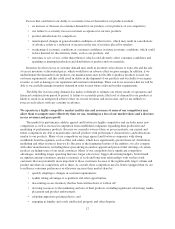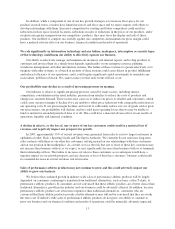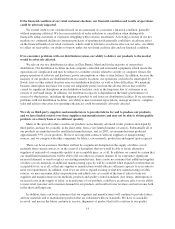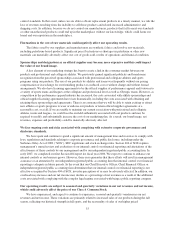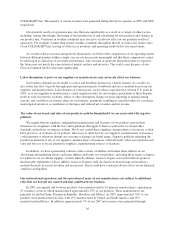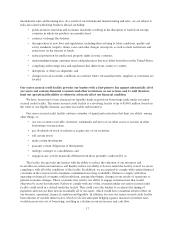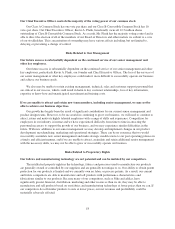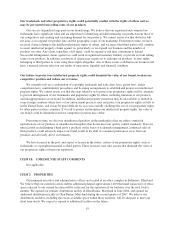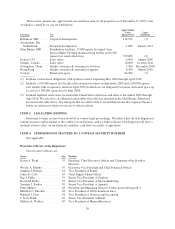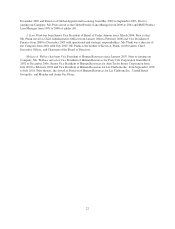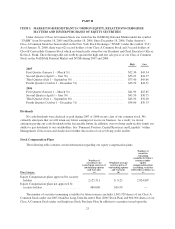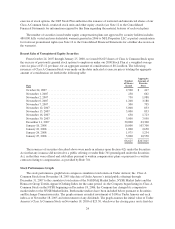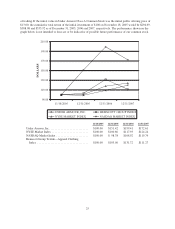Under Armour 2007 Annual Report Download - page 25
Download and view the complete annual report
Please find page 25 of the 2007 Under Armour annual report below. You can navigate through the pages in the report by either clicking on the pages listed below, or by using the keyword search tool below to find specific information within the annual report.control standards. In that event, unless we are able to obtain replacement products in a timely manner, we risk the
loss of revenues resulting from the inability to sell those products and related increased administrative and
shipping costs. In addition, because we do not control our manufacturers, products that fail to meet our standards
or other unauthorized products could end up in the marketplace without our knowledge, which could harm our
brand and our reputation in the marketplace.
Fluctuations in the cost of raw materials could negatively affect our operating results.
The fabrics used by our suppliers and manufacturers are synthetic fabrics and involve raw materials,
including petroleum-based products. Significant price fluctuations or shortages in petroleum or other raw
materials can materially adversely affect our cost of goods sold, results of operations and financial condition.
Sponsorships and designations as an official supplier may become more expensive and this could impact
the value of our brand image.
A key element of our marketing strategy has been to create a link in the consumer market between our
products and professional and collegiate athletes. We previously gained significant publicity and brand name
recognition from the perceived sponsorships associated with professional and collegiate athletes and sports
programs using our products. The use of our products by athletes and teams was frequently without our paying
compensation or in exchange for our furnishing product at a reduced cost or without charge and without formal
arrangements. We also have licensing agreements to be the official supplier of performance apparel and footwear to
a variety of sports teams and leagues at the collegiate and professional level as well as Olympic teams. However, as
competition in the performance apparel industry has increased, the costs associated with athlete sponsorships and
official supplier licensing agreements have risen dramatically, including the costs associated with obtaining and
retaining these sponsorships and agreements. There is no assurance that we will be able to retain existing or attract
new athletes or sports programs to wear or endorse our products or retain official supplier agreements at a
reasonable cost, or at all. If we are unable to maintain our current association with professional and collegiate
athletes, teams and leagues, we could lose the on-field authenticity associated with our products and may be
required to modify and substantially increase the cost of our marketing plan. As a result, our brand image, net
revenues, expenses and profitability could be materially adversely affected.
We face ongoing costs and risks associated with complying with extensive corporate governance and
disclosure standards.
We have spent and continue to spend a significant amount of management time and resources to comply with
laws, regulations and standards relating to corporate governance and public disclosure, including under the
Sarbanes-Oxley Act of 2002 (“SOX”), SEC regulations and stock exchange rules. Section 404 of SOX requires
management’s annual review and evaluation of our internal control over financial reporting and attestations of the
effectiveness of these controls by our management and by our independent registered public accounting firm. In
early 2007, we completed our first Section 404 report for fiscal year 2006. We expect to continue to enhance our
internal controls as our business grows. However, there is no guarantee that these efforts will result in management
assurance or an attestation by our independent registered public accounting firm that internal control over financial
reporting is adequate in future periods. In the event that our Chief Executive Officer, Chief Financial Officer or
independent registered public accounting firm determines that our internal control over financial reporting is not
effective as required by Section 404 of SOX, investor perceptions of us may be adversely affected. In addition, our
overhead may increase and our net income may decline as a percentage of net revenues as a result of the additional
costs associated with complying with the complex legal regime associated with being a public reporting company.
Our operating results are subject to seasonal and quarterly variations in our net revenues and net income,
which could adversely affect the price of our Class A Common Stock.
We have experienced, and expect to continue to experience, seasonal and quarterly variations in our net
revenues and net income. These variations are primarily related to increased sales of our products during the fall
season, reflecting our historical strength in fall sports, and the seasonality of sales of our higher priced
15


